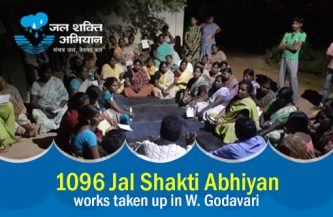Rejuvenation of ODI River transformed many lives

Introduction
Odi River originates from Madansagarat, which is located in Katal area of Madanpur village of Mandwara development block in Lalitpur District. There are four Gram Panchayats, namely Madanpur, Didaunia, Hansera and Paharikala, which are situated near river basin. The flow of water from the river has lost its force and natural form due to the presence of many check dams with the accumulation of silts. The geographical and vegetative balance of the river started to deteriorate due to which the rejuvenation of the Odi River had become extremely important. This work was taken up by the district administration.

Voice
“Rejuvenation work has increased the availability of water for irrigation. We have started Moong cultivation as water is available for irrigation. Our farms are protected from soil erosion during rainy season”. —Deshpat Singh, Villager
Implementation
The work was planned and implemented in a phased manner. A total of 42 locations were selected at a distance of 14 km from Madanpur to Jamni Dam for water conservation work. Out of these locations, water conservation works were done at 33 places from the month of April to June in the year 2018–2019. The silt removed during the process was used for making bunds with plantations. The work was further extended in the remaining nine locations and five new locations. The work was completed in convergence with Gram Panchayat and other schemes for water recharging. An expenditure of Rs. 63.99 lakhs was incurred from MGNREGS and Rs. 23.30 lakhs from Gram Panchayat Funds (State Finance Commission). The district administration of Lalitpur played an important role, and this work also won the National Water Award in 2018 from the Government of India. The NGO Bundelkhand Sewa Sansthan played a key role in supporting the district administration in taking up this work.


Impact
Now, water is available for irrigation benefiting rabi crop. In the Gram Panchayat, approximately 40% of households have benefitted, and the nearby farmers are able to irrigate their fields three to four times for one crop, which resulted in increase in production by 20–50% in the rabi season. Many farmers started moong cultivation as they could irrigate one crop six times. Water and fodder are available for cattle throughout the year. The rejuvenation work has led to the availability of water in wells and handpumps throughout the year. As a result, 2,135 acres of land becomes cultivable, and a total of 924 households have been benefitted.





